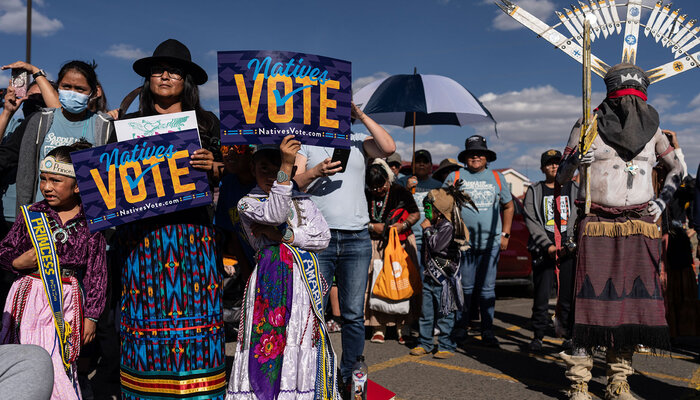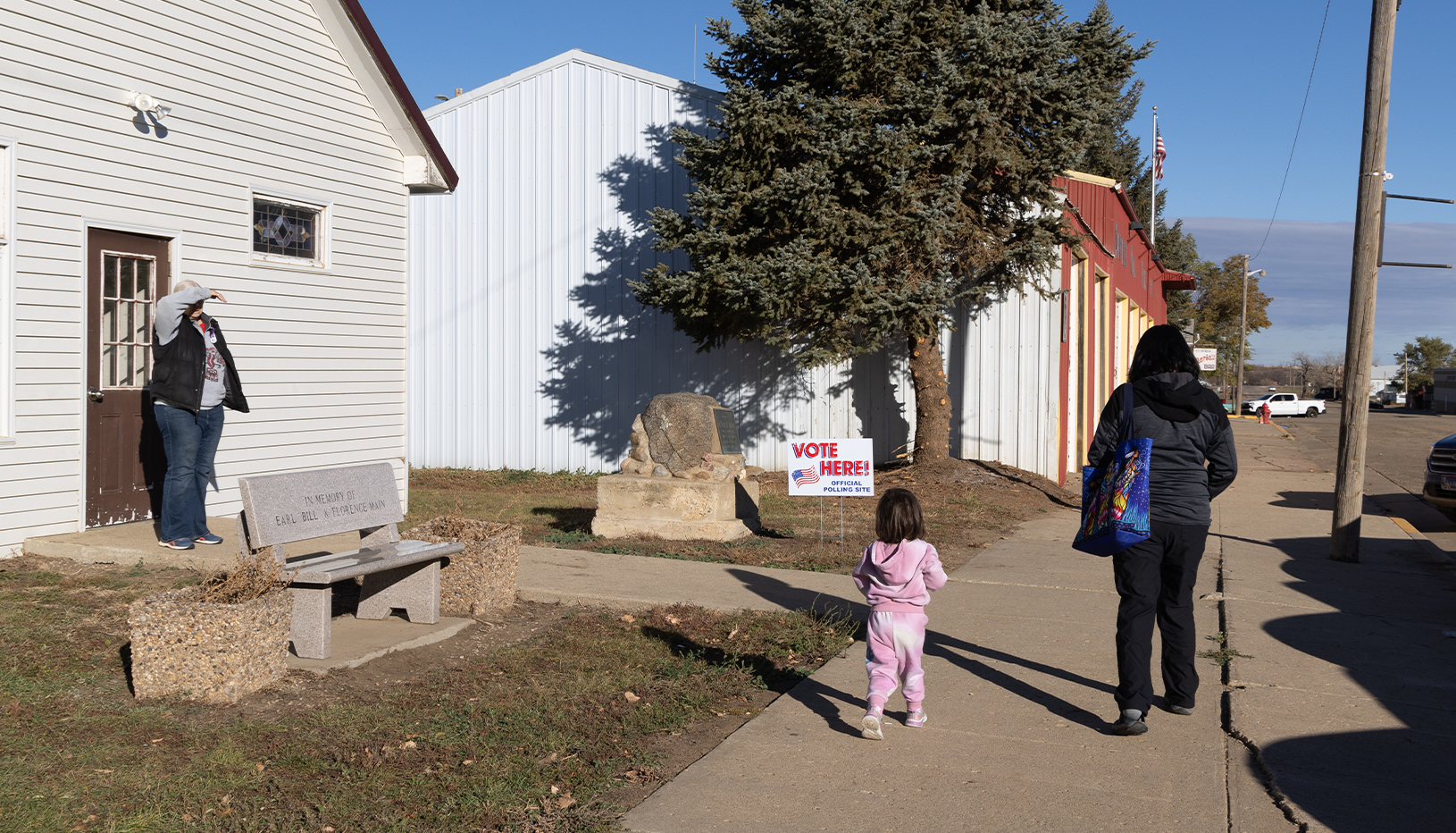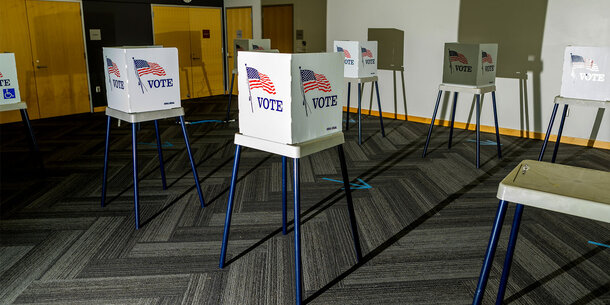In the 2024 election cycle, voters nationwide had to contend with the threat of being unjustly removed from the voter rolls, stricter ID requirements to cast their ballots, and long lines on Election Day. Native American voters, however, felt the strain of voter suppression uniquely.
In Montana, members of the Fort Peck tribe were required to travel 30 to 60 miles to vote after being denied a satellite election office in a more accessible location for voters on the reservation. Similarly, Native voters in multiple states were denied the ability to vote using their tribal identification cards, including in Wisconsin, where tribal IDs are legally accepted.
These incidents are part of a long and storied history of Native American voter disenfranchisement. Amid our nation’s track record of restrictive voter policies, our new report shows depressed voter turnout among its original residents.
Racial discrimination against Native Americans is embedded in American history, as this country was built on land and resources taken from Indigenous people. Our public policies since have restricted Native Americans’ collective economic progress, social stability, and political influence. Nevertheless, despite countless efforts to dilute their voting power, Native Americans have sustained consistent participation in federal, state, local, and tribal elections.
In many states, such as Alaska, Arizona, Michigan, and Montana, Native voters are a significant voter bloc large enough to sway elections at every level of government. Still, their electoral participation often confronts policies that are distinctly burdensome for those who live on tribal lands.
Policies like the strict limits on ballot collection in Nevada and New Mexico eliminate options for voters on rural tribal lands who lack transportation to distant ballot drop boxes and post offices. Policies that require documentary proof of citizenship (birth certificates and passports) to register to vote tend to have racially discriminatory impacts, as supported by a previous Brennan Center study finding that nearly 11 percent of people of color do not have easy access to these documents. The burden of obtaining documentary proof of citizenship is heightened for those on tribal lands, who must travel extreme distances to the nearest county records office and often have limited access to postal services.
These restrictive policies have been passed under the guise of election security, but the fact is that voter fraud is vanishingly rare. Instead of protecting our elections, these policies are a roadblock for Native voters, whose path to political inclusion has already been tumultuous.
Our new study makes clear the cost of these voting restrictions by comparing turnout across 21 states between voters who live on federally recognized tribal lands and those who do not. We analyzed millions of voter records from 2012 to 2022 and found that the gap in voter turnout between these two groups is substantial, on average 11 percent. When analyzing by election type, our findings show that the turnout gap averages 15 percent in presidential elections and 7 percent in midterm elections.
Gaps in voting between the two groups suggest that the conditions on tribal lands are limiting enough to deter some would-be voters. Long commutes to the polls, insufficient language assistance, and unreliable mail service are disenfranchising.
Scholarship has shown that voters of color are more likely to turn out when they live in jurisdictions where their ethnic group is the majority. Our analysis suggests a different story for Native voters on tribal lands, however. The graph below demonstrates that among tribal lands in 21 states, as the percentage of Native voters increases, voter turnout decreases. This trend persists even when accounting for a tribal land’s median household income, education rates, median age, and population density.
Our study’s findings suggest that voting is more difficult for those who live on tribal lands, and the barriers may be more insurmountable in predominately Native communities.
The federal and state governments have a responsibility to end the exclusion of Native American voices by addressing and removing long-standing barriers to the ballot box. Passing the Native American Voting Rights Act presents a comprehensive opportunity to do so. The bill would increase in-person polling places on tribal lands, improve assistance for Indigenous-language speakers, and allow the use of tribal IDs for voting. To make good on our nation’s promise of a free and fair democracy, we must prioritize policies that extend the fundamental right to vote for all citizens.








